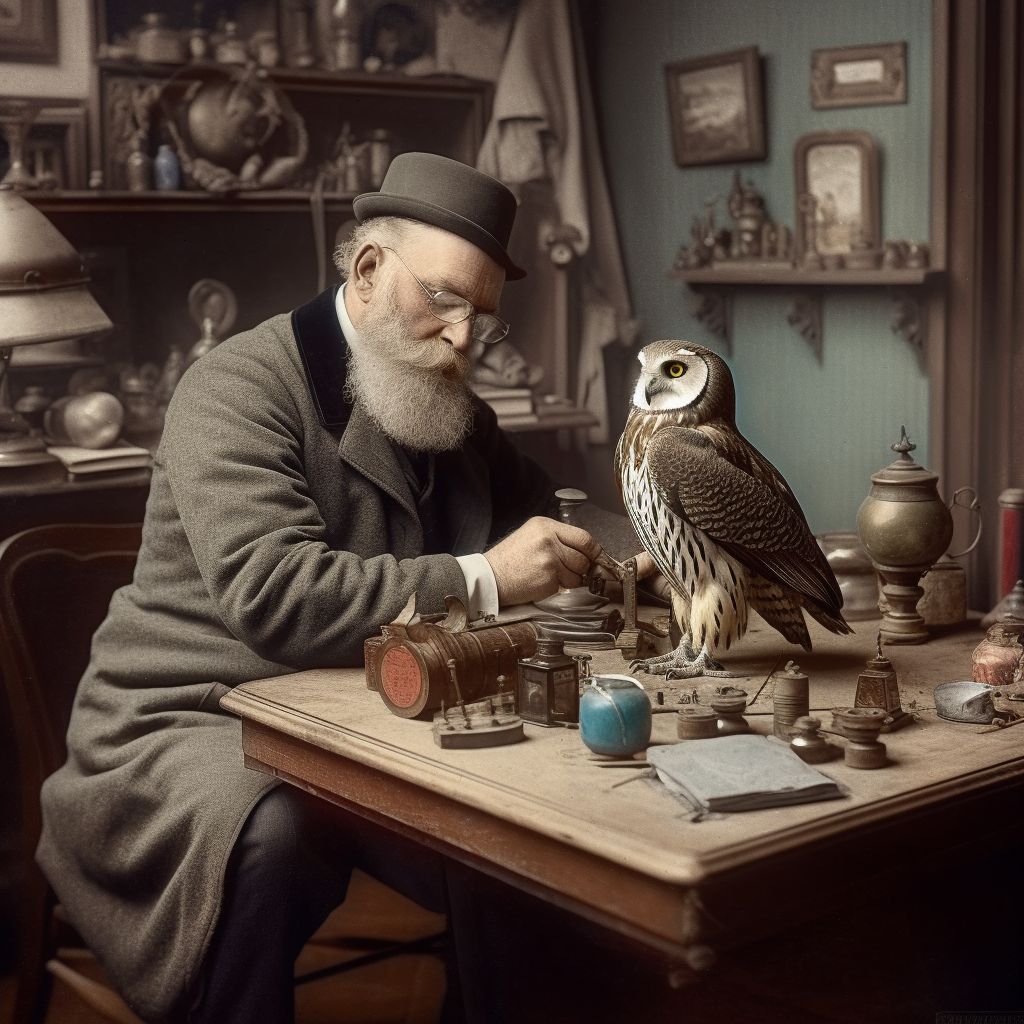Taxidermist
Taxidermy, the art of preserving and mounting animal specimens for display, has long been an esteemed profession, dating back to the early days of natural history and scientific exploration. In the latter half of the 19th century, taxidermists were sought after for their skill and expertise in recreating lifelike representations of animals for museums, educational institutions, and private collectors. As the technological revolution of the 1870s unfolded, taxidermists faced new opportunities and challenges in their craft, embracing some innovations while maintaining their commitment to traditional techniques.
The Role of Taxidermists
Taxidermists played a vital role in preserving the natural heritage of the 19th century, working with a diverse array of animal specimens ranging from birds and mammals to fish and reptiles. They were skilled artisans, employing a variety of techniques to prepare and mount specimens, ensuring that they retained their natural appearance and form.
The taxidermy process typically involved skinning the animal, treating the hide with preservatives, and then carefully attaching it to a custom-made form or armature. Taxidermists were required to have a thorough understanding of animal anatomy, as well as an artistic eye for detail and composition.
In addition to their work with animal specimens, taxidermists often collaborated with scientists, naturalists, and explorers to document and study the natural world. Their meticulous craftsmanship helped to bring the wonders of nature to a wider audience, inspiring curiosity and fostering a deeper appreciation for the diversity of life on Earth.
The Impact of Technological Innovations
In the 1870s, the rapid development of auto sapient automatons and other advanced technologies had a profound impact on various industries, including taxidermy. While taxidermists largely refrained from using auto sapient steelies in their work, they did adopt a range of specialized tools and equipment designed to improve the quality and efficiency of their craft.
These innovations included precision instruments for skinning and mounting specimens, as well as new chemicals and preservatives that allowed for more accurate and durable preservation of animal tissues. The adoption of these tools enabled taxidermists to create increasingly lifelike and detailed representations of their subjects, enhancing the educational and aesthetic value of their work.
The Decision to Avoid Auto Sapient Steelies
Despite the widespread adoption of auto sapient automatons in other professions, taxidermists largely chose to avoid using these machines in their work. This decision was driven by several factors, including concerns about the ethical implications of using automatons to manipulate the remains of living creatures, as well as a deep-seated belief in the importance of Human artistry and craftsmanship.
Taxidermists recognized that their profession was as much an art as it was a science, and they feared that the use of auto sapient steelies would diminish the unique skills and talents required to create truly lifelike animal specimens. By continuing to rely on traditional techniques and the human touch, taxidermists ensured that their work retained its artistic integrity and authenticity.
Conclusion
The taxidermist profession in the 19th century was characterized by a delicate balance between art and science, with practitioners dedicated to preserving the natural world in all its intricate beauty. As the technological revolution brought new tools and innovations to their craft, taxidermists carefully navigated the opportunities and challenges presented by this changing landscape. By embracing the advancements that complemented their work while maintaining their commitment to traditional techniques, taxidermists ensured that their profession remained an enduring testament to the wonder and complexity of the natural world.
Type
Artisan

